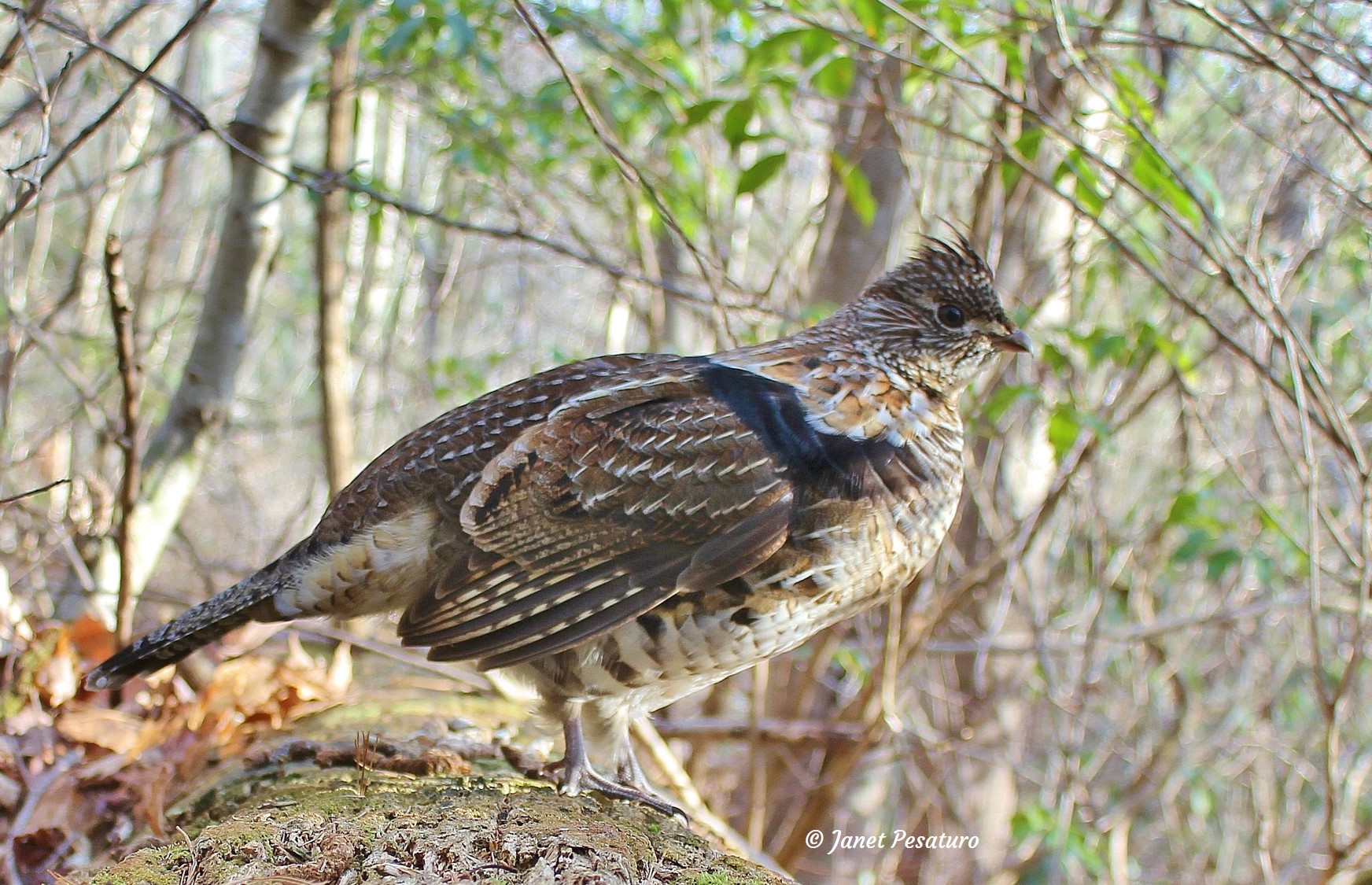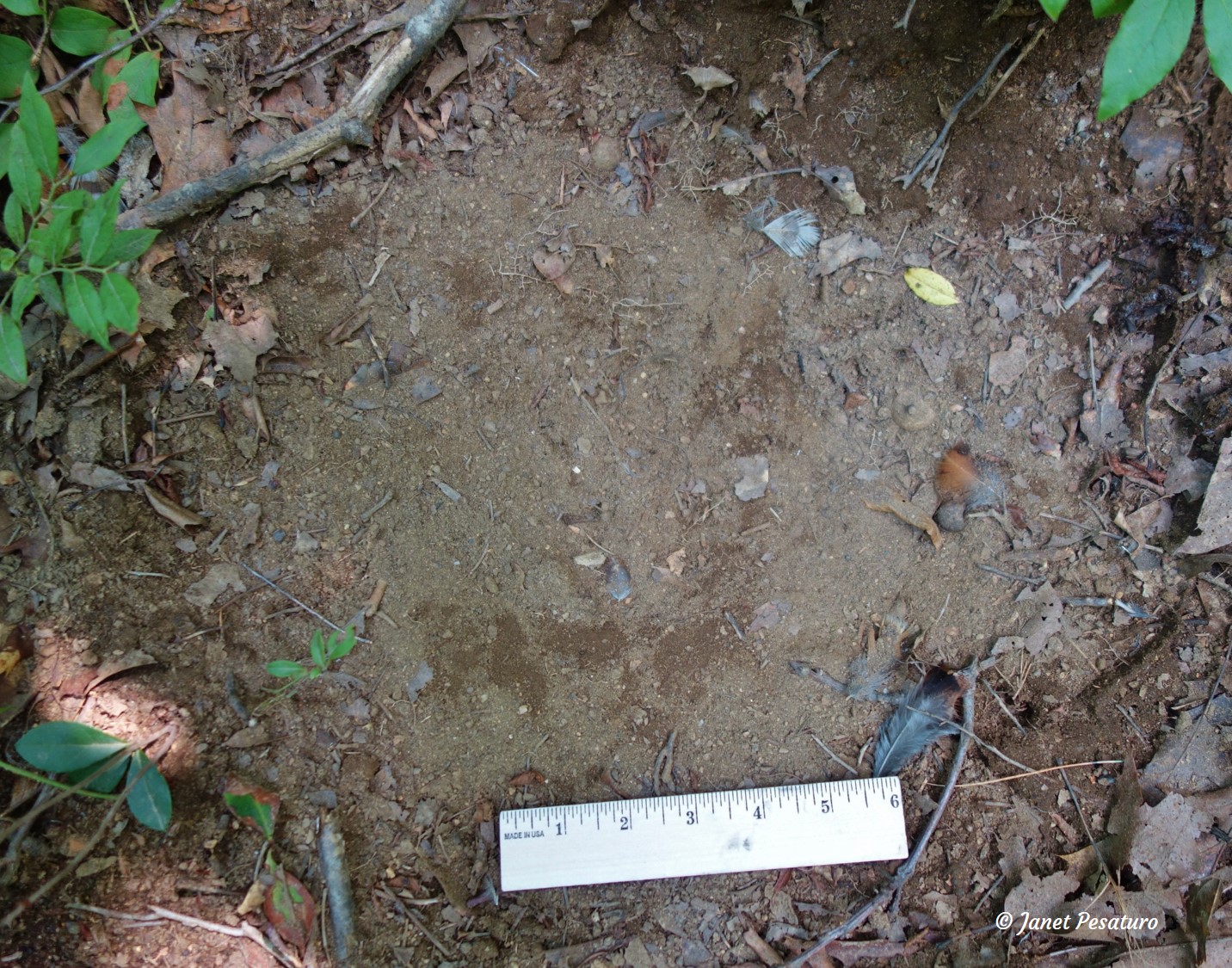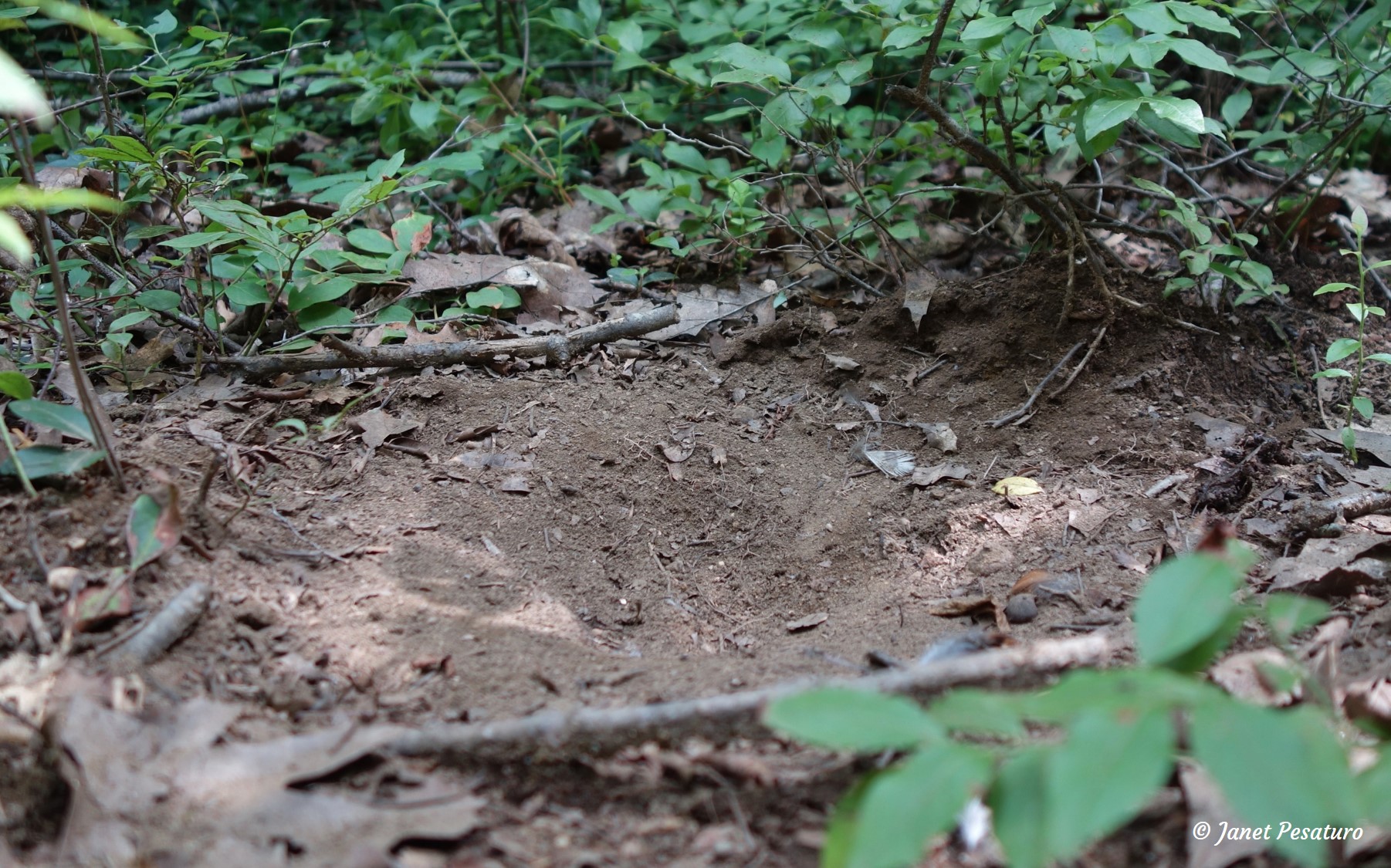Ruffed Grouse Dust Bathing…Almost!

Many bird species bathe in “dust” (sand or soil) as part of their plumage preening process. The bird prepares a new spot for dust bathing by scraping a patch of dry, fine, loose soil or sand with its feet to create a wallow. Then it lowers itself into the wallow and rolls its body while moving soil up with its feet and wings. The “dust” absorbs excess oil from the preen gland, and possibly feather parasites. When finished dusting, the bird stands up and shakes itself off, causing the soil particles clumped with preen oil and parasites to fall to the ground. I’ve seen our chickens do this many times in the backyard, but I’ve long wanted to get a video of a ruffed grouse dust bathing.
So this video (below) is a bit disappointing because the bird didn’t actually bathe. But having returned to the spot, it did confirm that the bowl shaped depression in the dirt was indeed a grouse dusting wallow, and confirmation of one’s tracking diagnoses is part of the fun of camera trapping. It looks like something alarmed the bird just as it was about to lower into the bath. I say that because the bird began to fan its tail, a sign that it felt challenged in some way. Perhaps another grouse entered the scene. It’s possible that the camera alarmed it, but grouse haven’t taken much notice of the cameras I’ve placed on their drumming logs. Whether it was the camera or something else that stopped the bird from bathing, it may have returned to bathe at some future time, but there was no further opportunity to see it, because later that same day something pushed the camera over. So, from July 30th till camera pick-up day on September 21st, the camera recorded nothing but videos of swaying overhead vegetation.
Here are some photos of the dust wallow (which also appear in the video). Notice that the shape is roundish to oblong and the size is about right for a ruffed grouse. The feathers on the right side of the photo suggest that it was a grouse, and not some other similar sized animal, that used the spot.


Look for dust baths next time you’re out tracking and set a camera on it if you find one. What makes a dust bath a good camera trap target is that once an animal has loosened the soil and created a nice, dusty bowl, it will probably return to the same site repeatedly to bathe. This makes a lot of sense — why devote the time and energy to creating a new one when yesterday’s bath is already just right?
Many mammals also dust bathe, and in the near future I’ll post about that.
Related Posts
Ruffed Grouse Preening
Ruffed Grouse Drumming
Little Drummer Bird

Comments
Ruffed Grouse Dust Bathing…Almost! — No Comments
HTML tags allowed in your comment: <a href="" title=""> <abbr title=""> <acronym title=""> <b> <blockquote cite=""> <cite> <code> <del datetime=""> <em> <i> <q cite=""> <s> <strike> <strong>